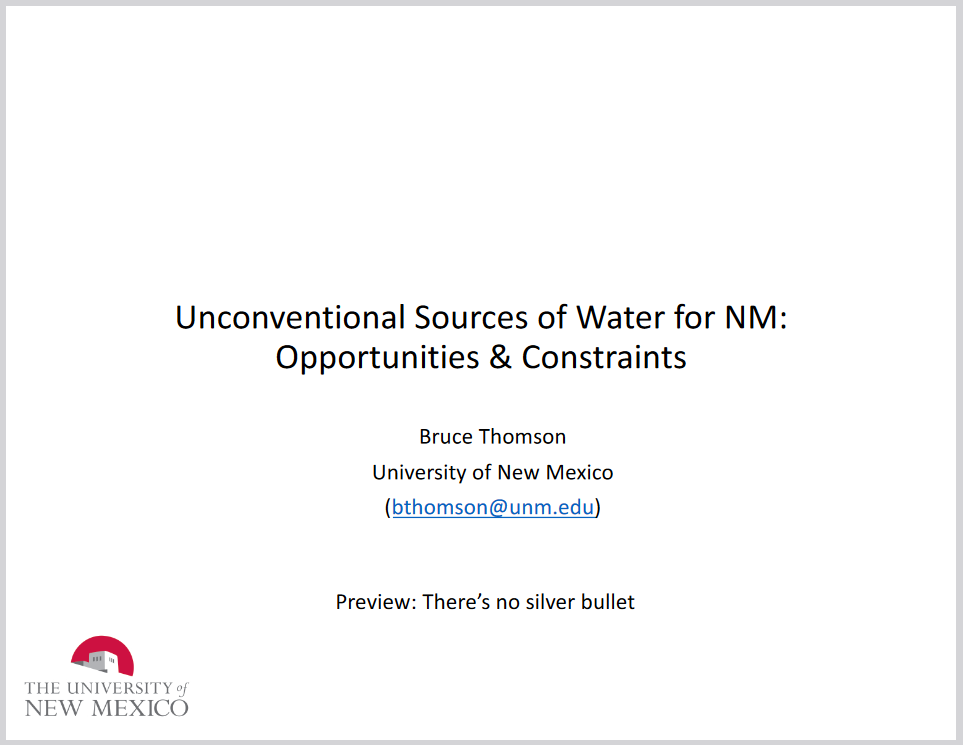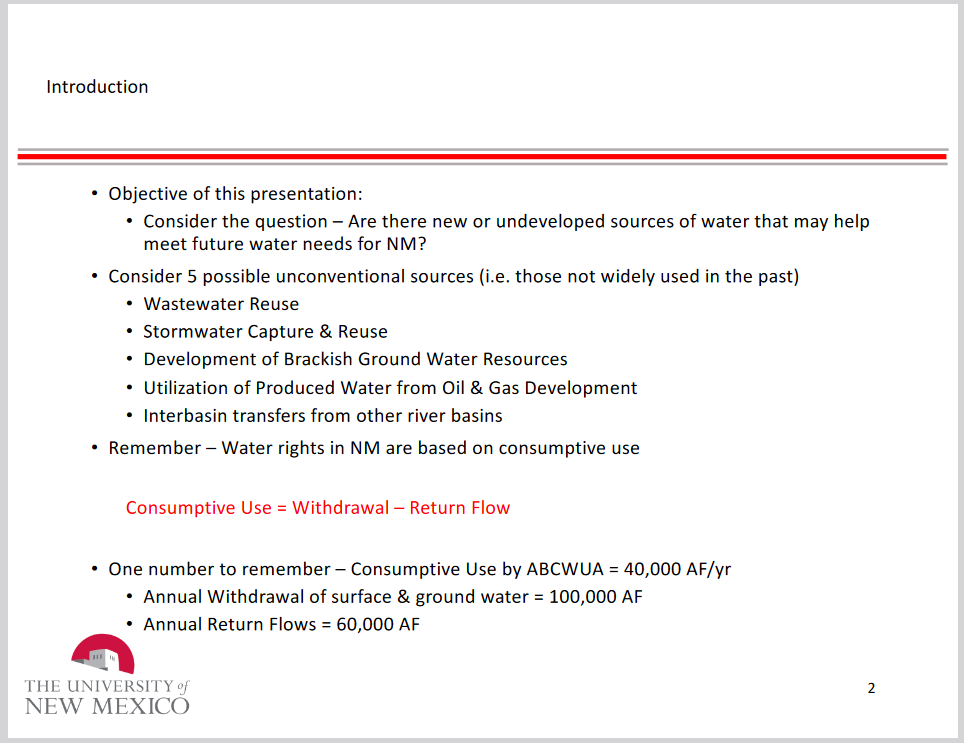Non-Conventional Water Resources – Surface and Subsurface Sources – Posted on June 8, 2024

Global Warming and Population Growth, create a need for more Water.
There are a number of different ways to address a shortage of water:
-
Get equal value from less water (Conservation)
-
Find more water from surface and groundwater sources
-
Have more precipitation (Increase the velocity of water)
In this article, we discuss “Finding More Water from Surface Water and Groundwater.
Recently, Dr. Bruce M. Thomson, Regents Professor of Civil Engineering gave a very good presentation on this approach. Dr. Thompson gave me permission to write an article on his presentation with my comments, which are mostly explanatory, in boxes.
Let us get started.

| Bruce is pretty pessimistic that most alternative water sources will play a meaningful contribution to the hole in the budget that we anticipate due to global warming. I tend to agree with him but not totally. He provides a strong argument for his conclusion but I think there may be important niches and separately I will discuss cloud seeding which is widely used in the U.S. West and around the World. I really appreciate the thorough analysis provided by Professor Thomson. |

| Bruce covers the major alternative water sources that we think of in the inland West other than cloud seeding which I will cover in a separate article. Many of the sources that Bruce covers involve chemical processing to reclaim the water. I think Dr. Thomson is a civil engineer and a very good one. To have the analysis be real many of the calculations are based on the water being available in Albuquerque NM but the calculation for other locations would be similar but not identical. In the West, we use Acre-feet as a measure i.e. the amount of water to flood an acre one foot deep or 325 851 US Gallon. For stream flows we use cubic feet per second which if sustained for a year would be 723.97 af. |